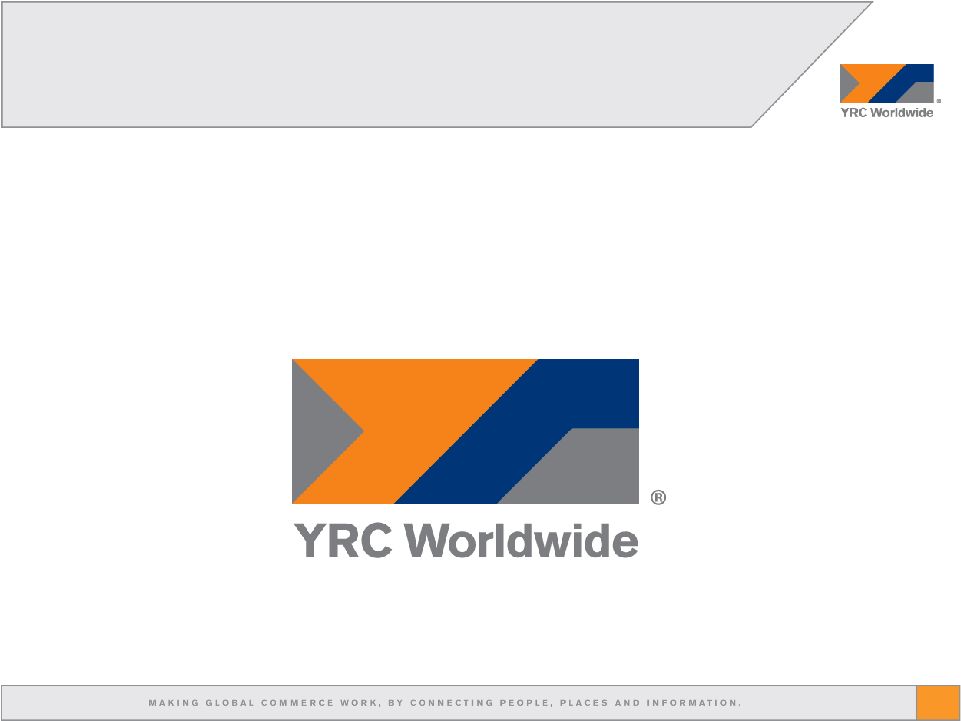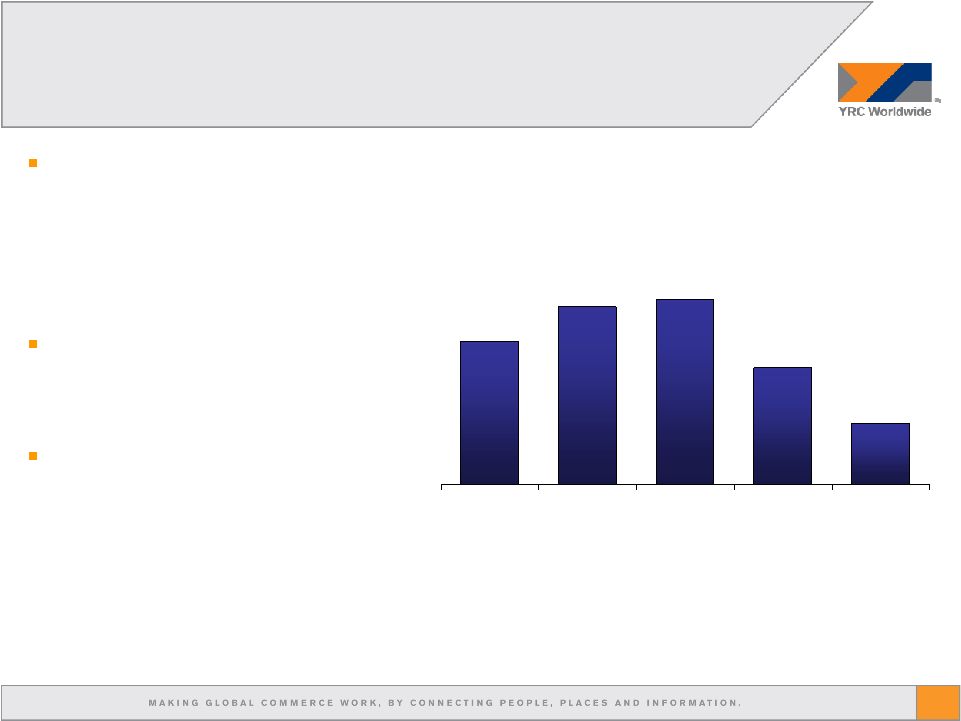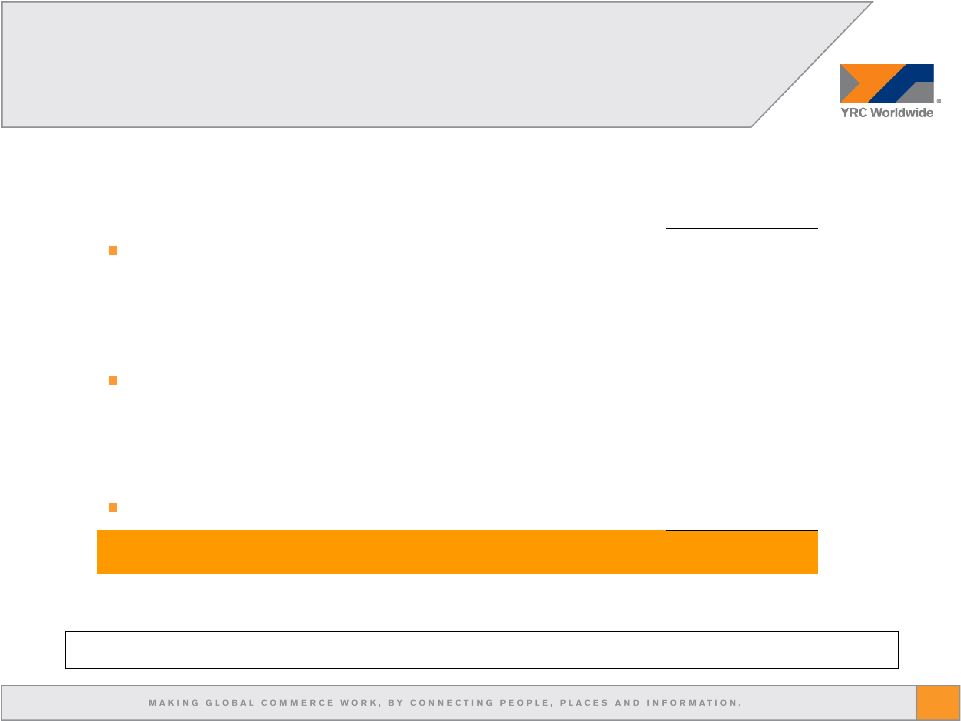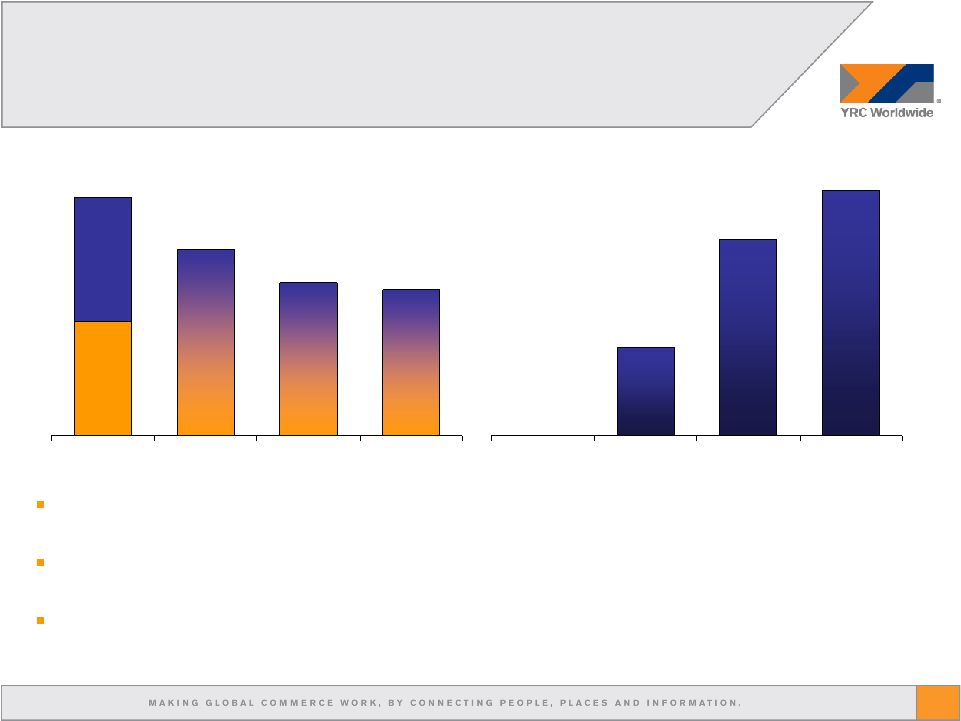12 Forward-Looking Statements • This presentation contains forward-looking statements within the meaning of Section 27A of the Securities Act of 1933, as amended, and Section 21E of the Securities Exchange Act of 1934, as amended. The words “should,” “anticipate," “expect,” “can,“ "will”, “forecasts”, “estimated” and similar expressions are intended to identify forward-looking statements. It is important to note that the company's actual future results could differ materially from those projected in such forward-looking statements because of a number of factors, including (among others) inflation, inclement weather, price and availability of fuel, sudden changes in the cost of fuel or the index upon which the company bases its fuel surcharge, competitor pricing activity, expense volatility, including (without limitation) expense volatility due to changes in rail service or pricing for rail service, ability to capture cost reductions, including (without limitation) those cost reduction opportunities arising from the combination of sales, operations and networks of Yellow Transportation and Roadway, changes in equity and debt markets, a downturn in general or regional economic activity, effects of a terrorist attack, labor relations, including (without limitation), the impact of work rules, work stoppages, strikes or other disruptions, any obligations to multi-employer health, welfare and pension plans, wage requirements and employee satisfaction, and the risk factors that are from time to time included in the company's reports filed with the Securities and Exchange Commission, including the company's Annual Report on Form 10-K for the year ended December 31, 2008. • The company’s expectations regarding the impact of, and its operating income and service improvements due to, the integration of Yellow Transportation and Roadway, enhancements to the Regional transportation networks and consolidation of back-office functions, and the timing of achieving that improvement could differ materially from those projected in such forward-looking statements based on a number of factors, including (among others) the factors identified in the immediately preceding paragraph, the ability to identify and implement cost reductions in the time frame needed to achieve these expectations, the success of the company’s operating plans, the need to spend additional capital to implement cost reduction opportunities, including (without limitation) to terminate, amend or renegotiate prior contractual commitments, the accuracy of the company’s estimates of its spending requirements, changes in the company’s strategic direction, the need to replace any unanticipated losses in capital assets, approval of the affected unionized employees of changes needed to complete the integration under the company’s union agreements, the readiness of employees to utilize new combined processes, the effectiveness of deploying existing technology necessary to facilitate the combination of processes, the ability of the company to receive expected price for its services from the combined network and customer acceptance of those services. • The company’s expectations regarding the savings to be generated from compensation and benefit reductions taken by both union and non-union employees are only its expectations regarding this matter. Actual savings generated will depend on the actual number of employees working, which, in turn, is dependent on business volumes and needs. • The company’s expectations regarding future asset dispositions and sale and financing leasebacks of real estate are only its expectations regarding these matters. Actual dispositions and sale and financing leasebacks will be determined by the availability of capital and willing buyers and counterparties in the market and the outcome of discussions to enter into and close any such transactions on negotiated terms and conditions, including (without limitation) usual and ordinary closing conditions such as favorable title reports or opinions and favorable environmental assessments of specific properties. • The company’s expectations regarding its ability to negotiate the deferral of union pension payments are only its expectations regarding this matter. Whether the company is able to defer union pension payments is dependant upon the company reaching agreement with the International Brotherhood of Teamsters and representatives of multi-employer defined benefit pension funds to which the company contributes. • The company’s expectations regarding its cash usage and gross capital expenditures are only its expectations regarding these items. Actual cash usage and expenditures could differ materially based on a number of factors, including (among others) the factors identified in the preceding paragraphs. | 










